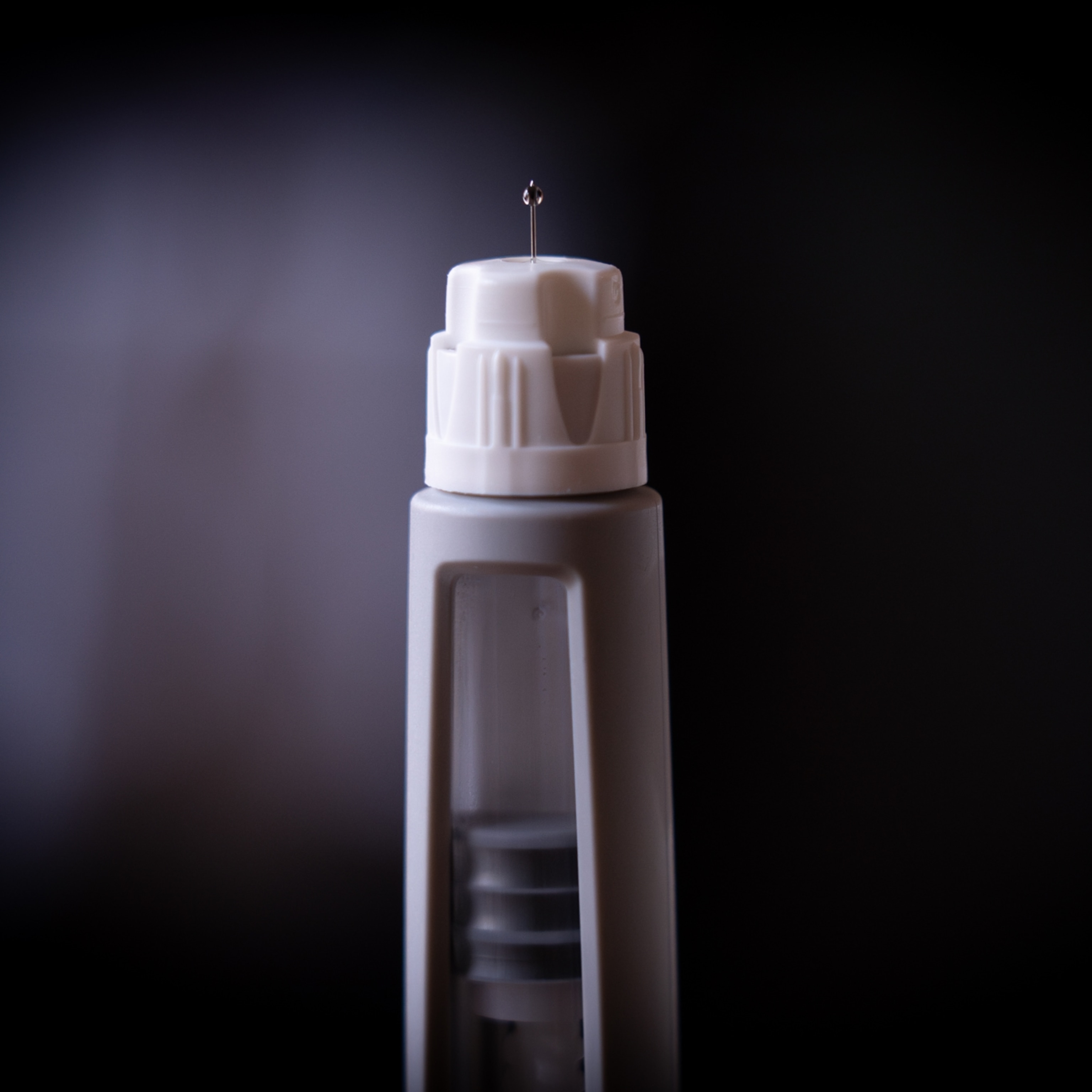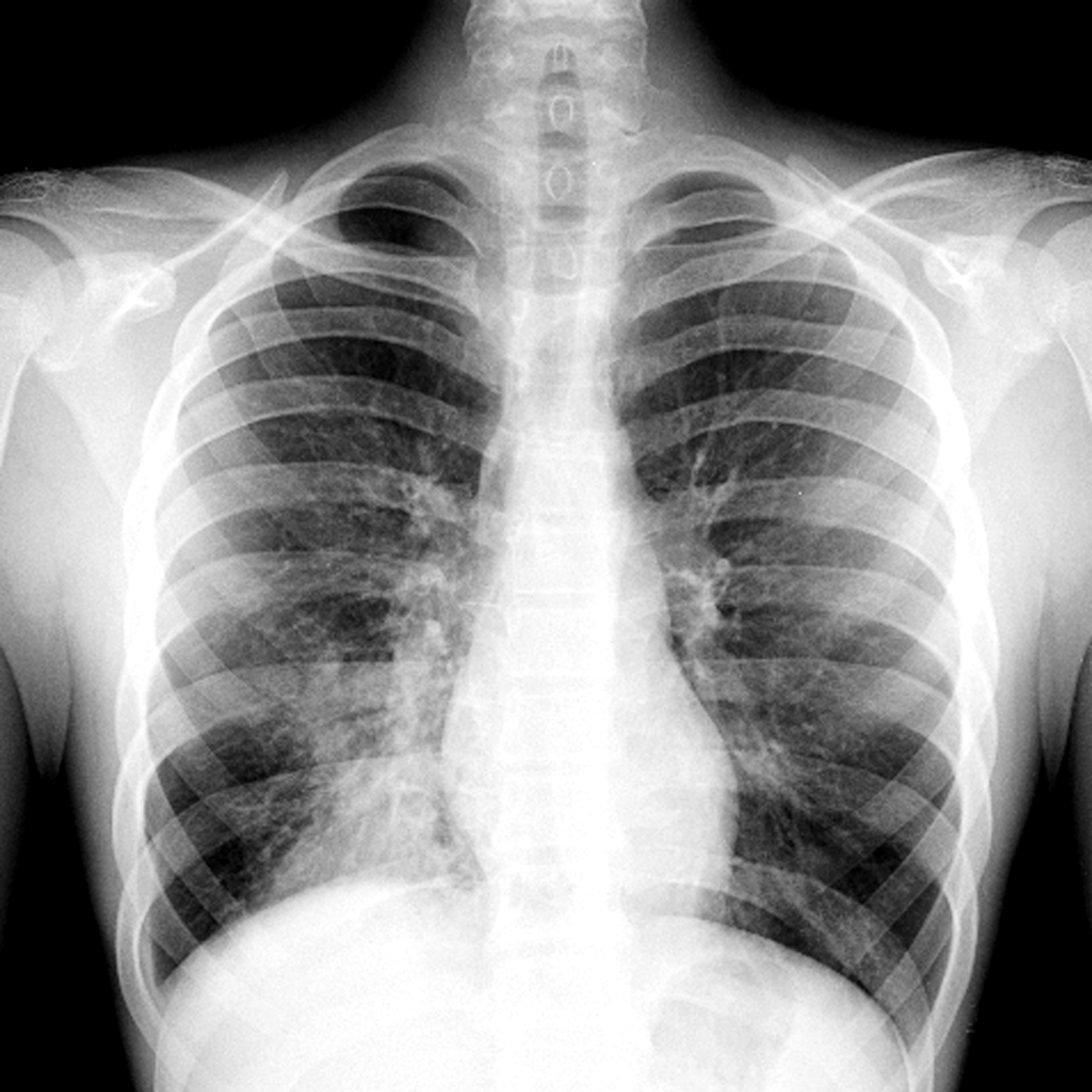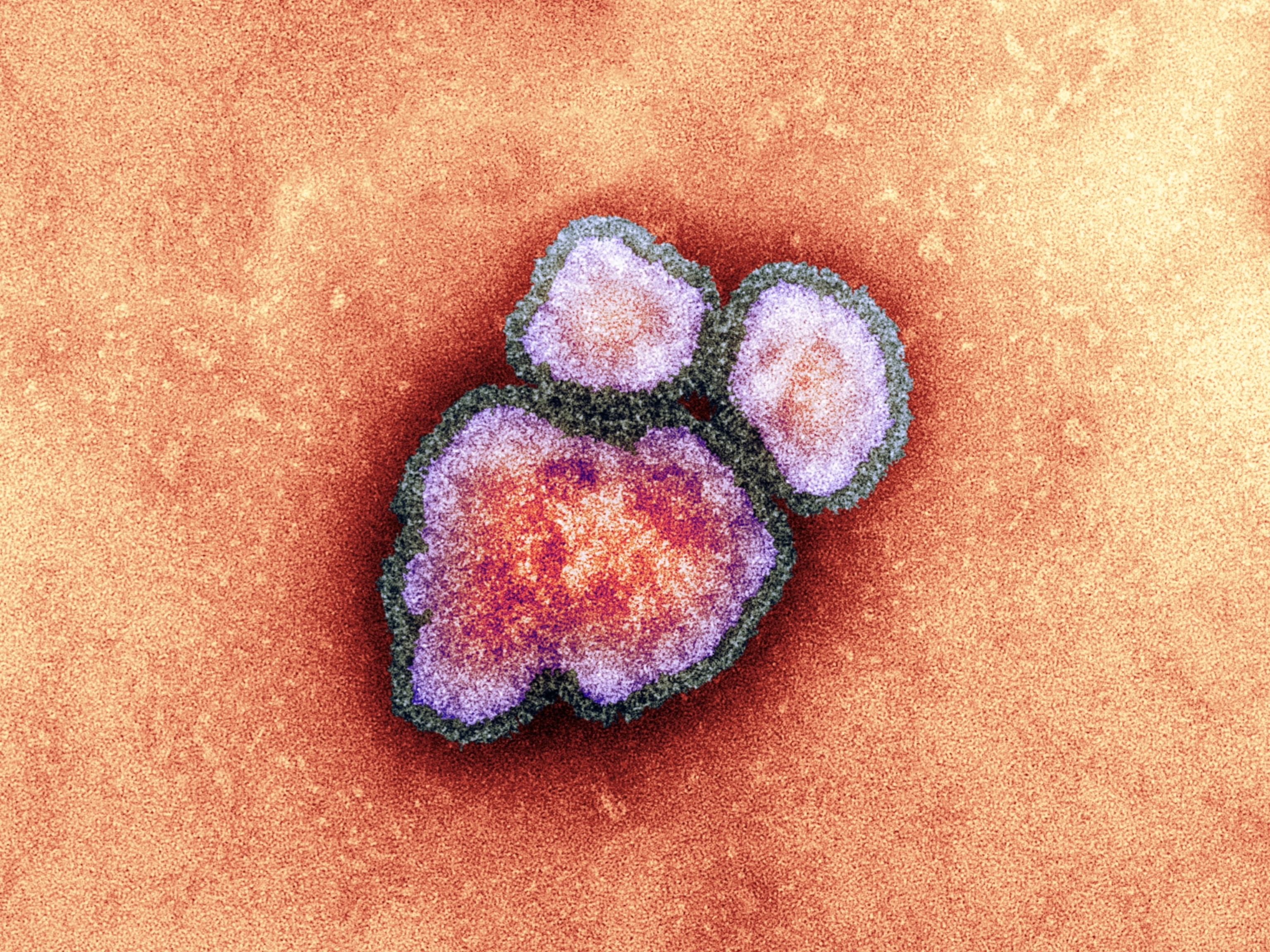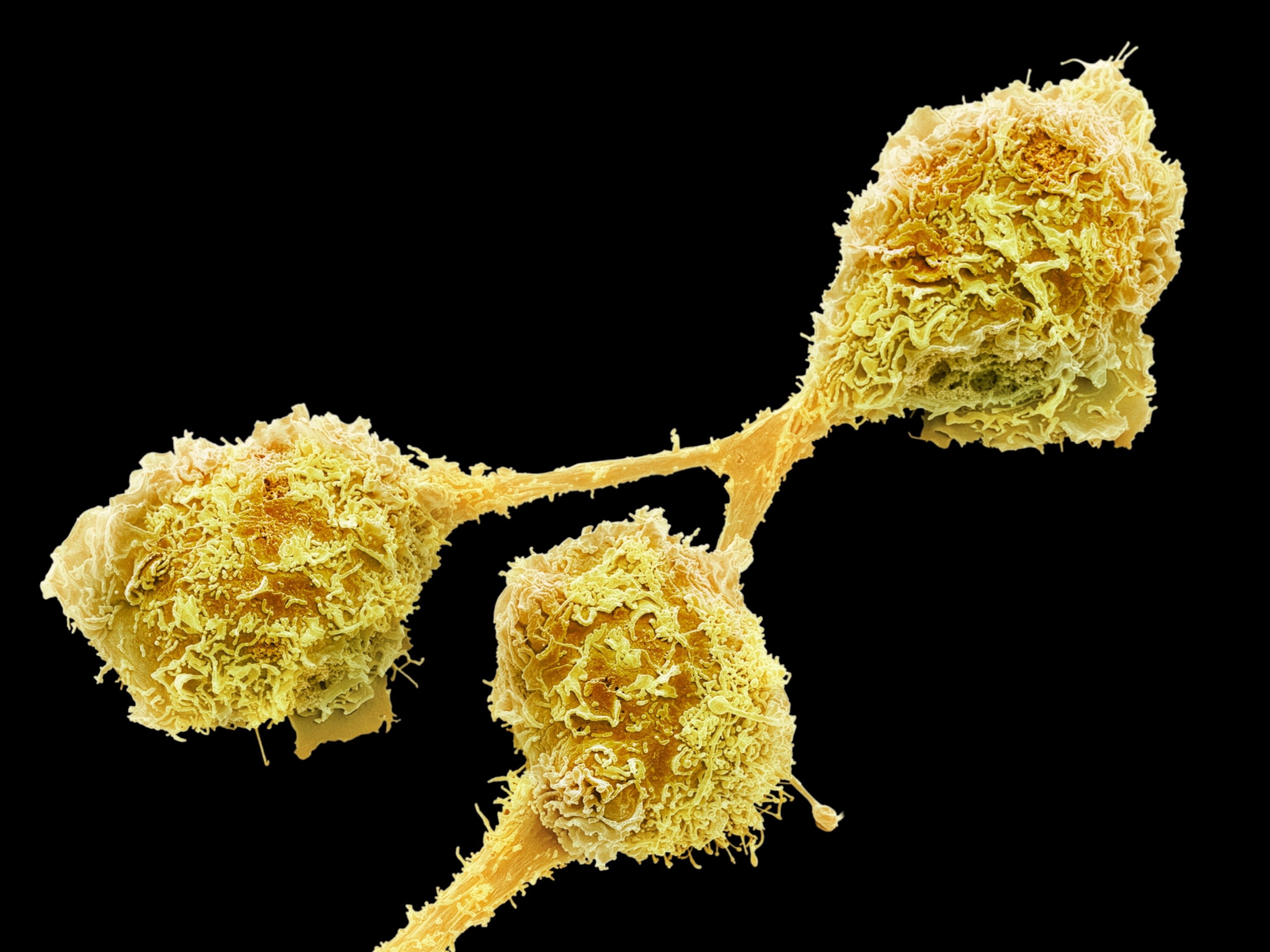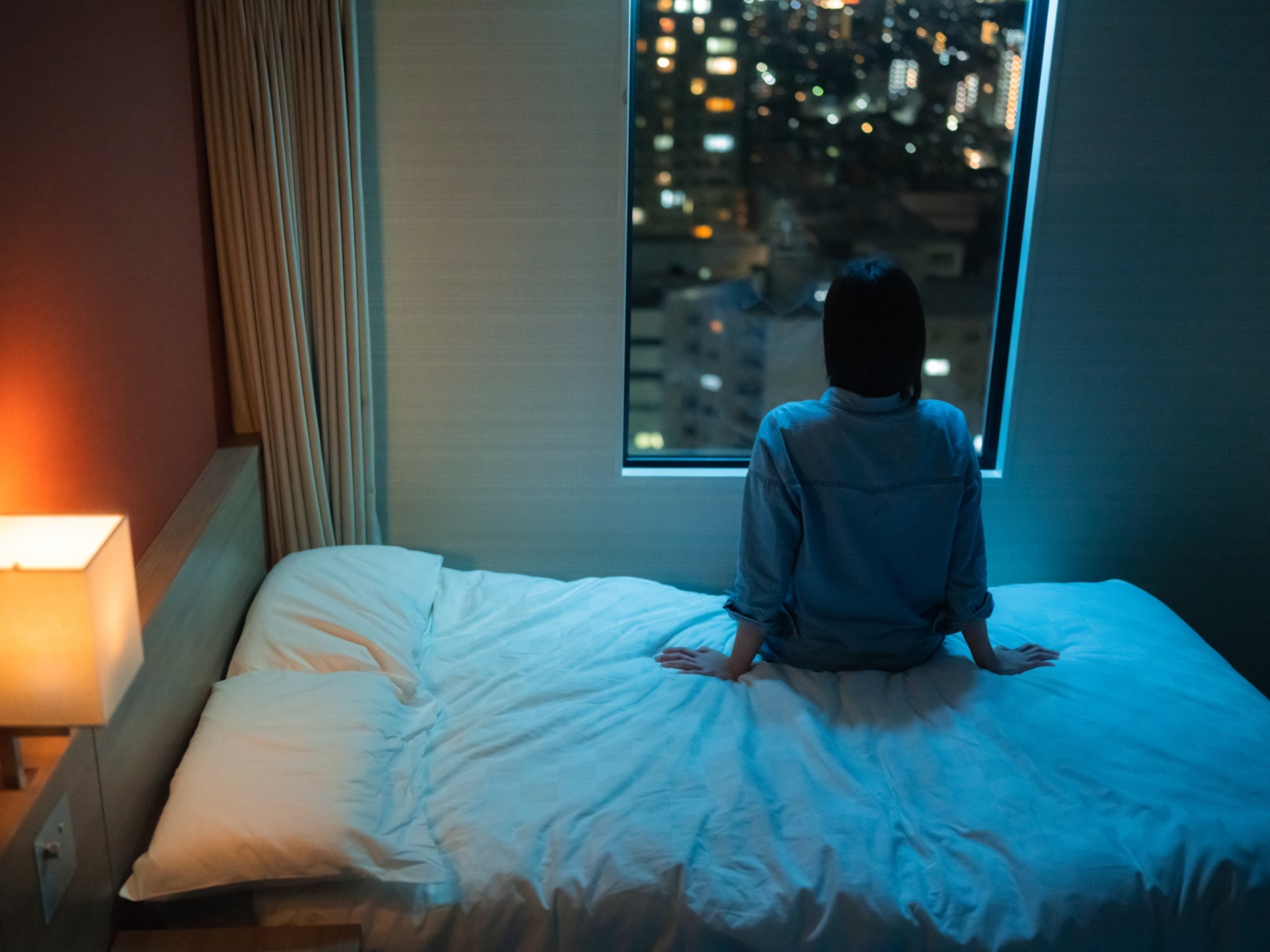Residents of L.A.’s ‘Skid Row’ seek hope as coronavirus worsens
Many of the roughly 5,000 people in this tight-knit community are homeless. With the first COVID-19 cases now reported, is the city ready for what may come?

Los Angeles — This city’s Skid Row has been home to people on the margins of society for more than a century. It’s a roughly 50-block area east of downtown, mostly warehouses, low-income housing, single-room occupancy hotels—and tents. The name Skid Row originated in Seattle, an hour south of the Washington farming region where I grew up. It initially described the logging communities along the “skid roads” where logs were dragged to be loaded onto ships at the port. Only later, around the time of the Great Depression, did it become synonymous with impoverished neighborhoods across the country. With some 5,000 people, L.A.’s Skid Row is like a little city within the metropolis—a city defined by the tents on its sidewalks.
On March 31, Skid Row reported its first case of coronavirus when an employee at Union Rescue Mission, one of many nonprofit aid organizations in the community, tested positive. Los Angeles as a whole expects a surge in COVID-19 cases this week. As of April 5, the county had 5,940 confirmed cases, and 132 Angelenos have died.
During the 1970s, Los Angeles deinstitutionalized many psychiatric hospitals, discharging people from long-term facilities and sending them to clinics and halfway houses or simply abandoning them, a problem that persists. Around the same time, numbers of returning Vietnam War veterans hobbled by mental illness and drug dependence, also converged on Skid Row. For many in the community, missions and volunteer organizations are keystones, their only means of survival.
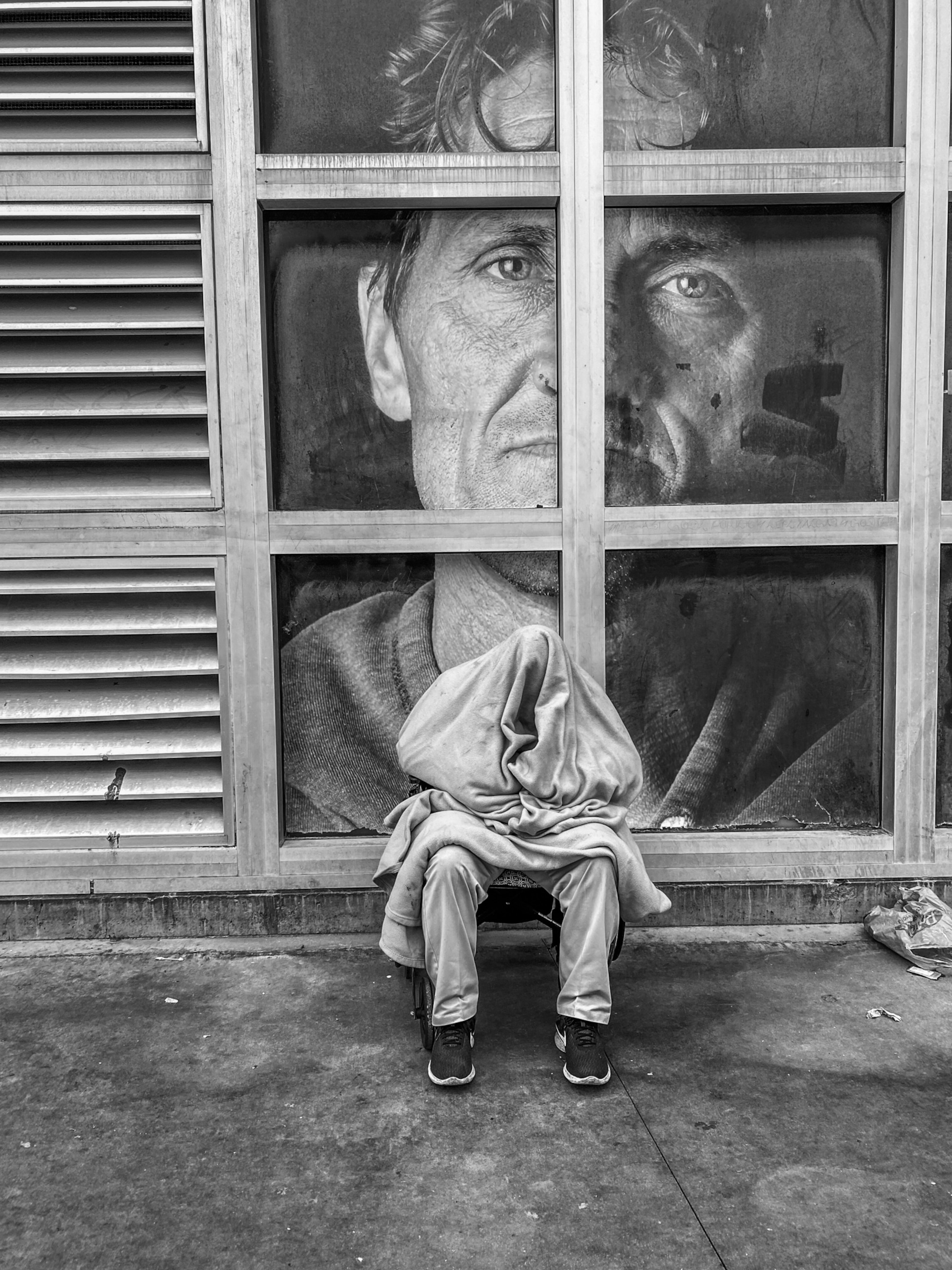
I’ve spent the past few months photographing Skid Row and its residents—some of the most vulnerable people in our city—and I worry about what might happen now that the virus has arrived. A recent study estimated that more than 2,500 of L.A.’s homeless population of 60,000 people—roughly 13 percent of whom live on Skid Row—could be infected.
Life here is very hands on, very close. People live crammed together and are always mingling. They swap or share food, drink, drugs, alcohol, money. They stand shoulder to shoulder in lines to receive food and other donated goods. Given how easily this novel coronavirus is transmitted, I imagine that an infected person could spread the disease immediately—and that it would run rampant.
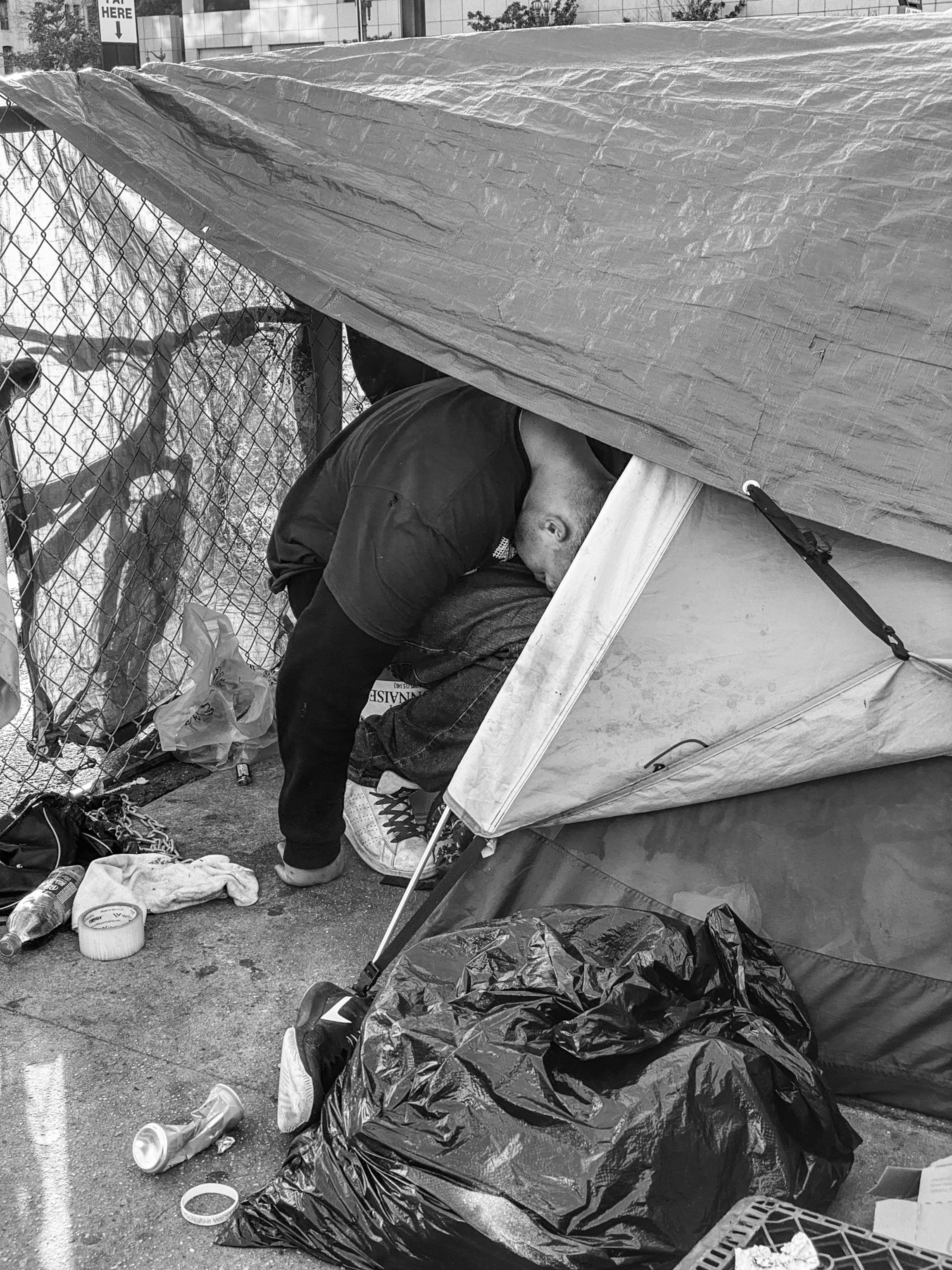

In recent weeks, I’ve noted that most people haven’t been adequately protected or keeping a safe distance from each other. But now some are wearing masks, most handmade. Stephanie Arnold Williams, who sells books and phone charges on one street corner, has started sewing masks out of old clothing. She always has a huge smile on her face while she works.
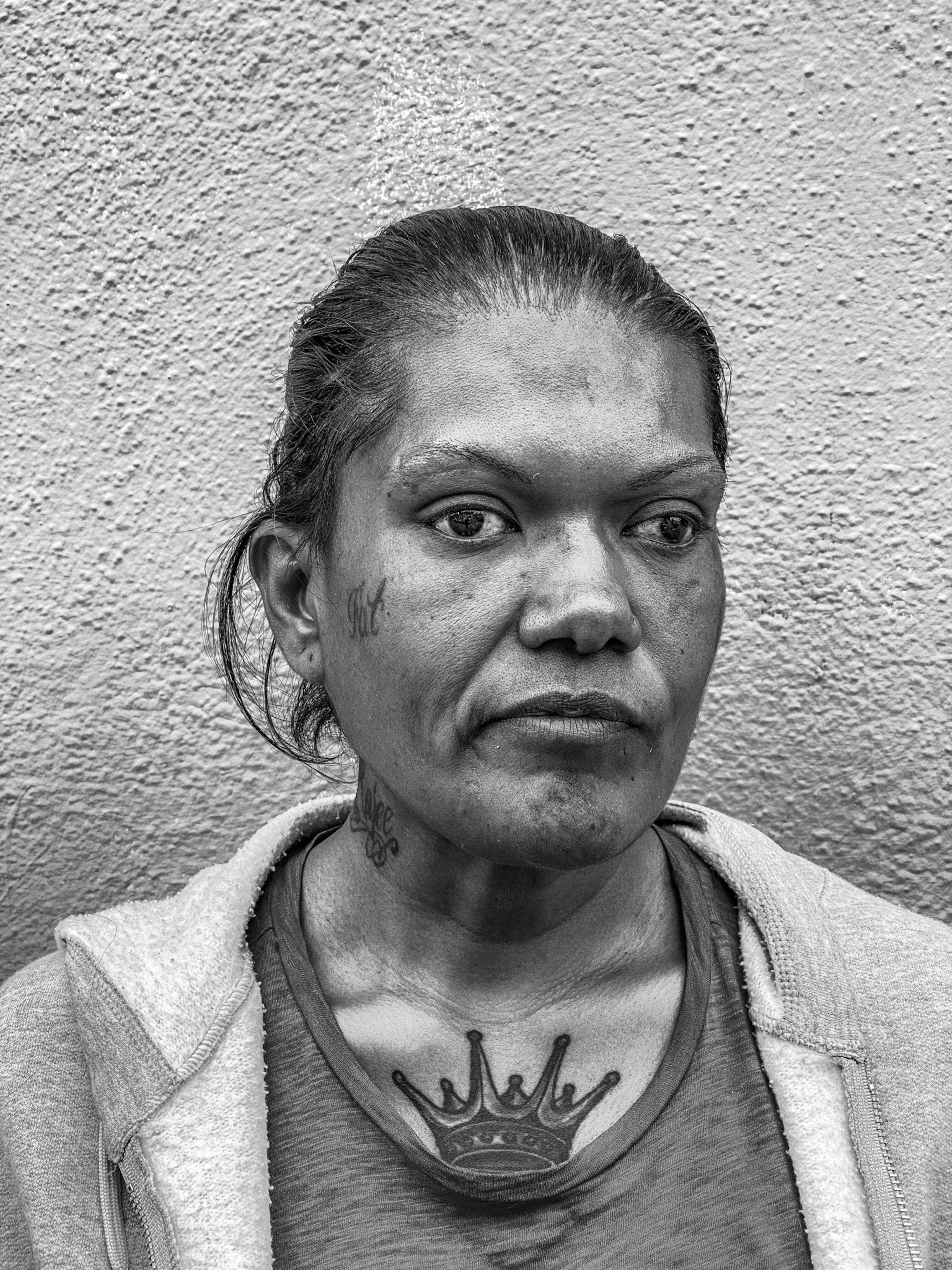
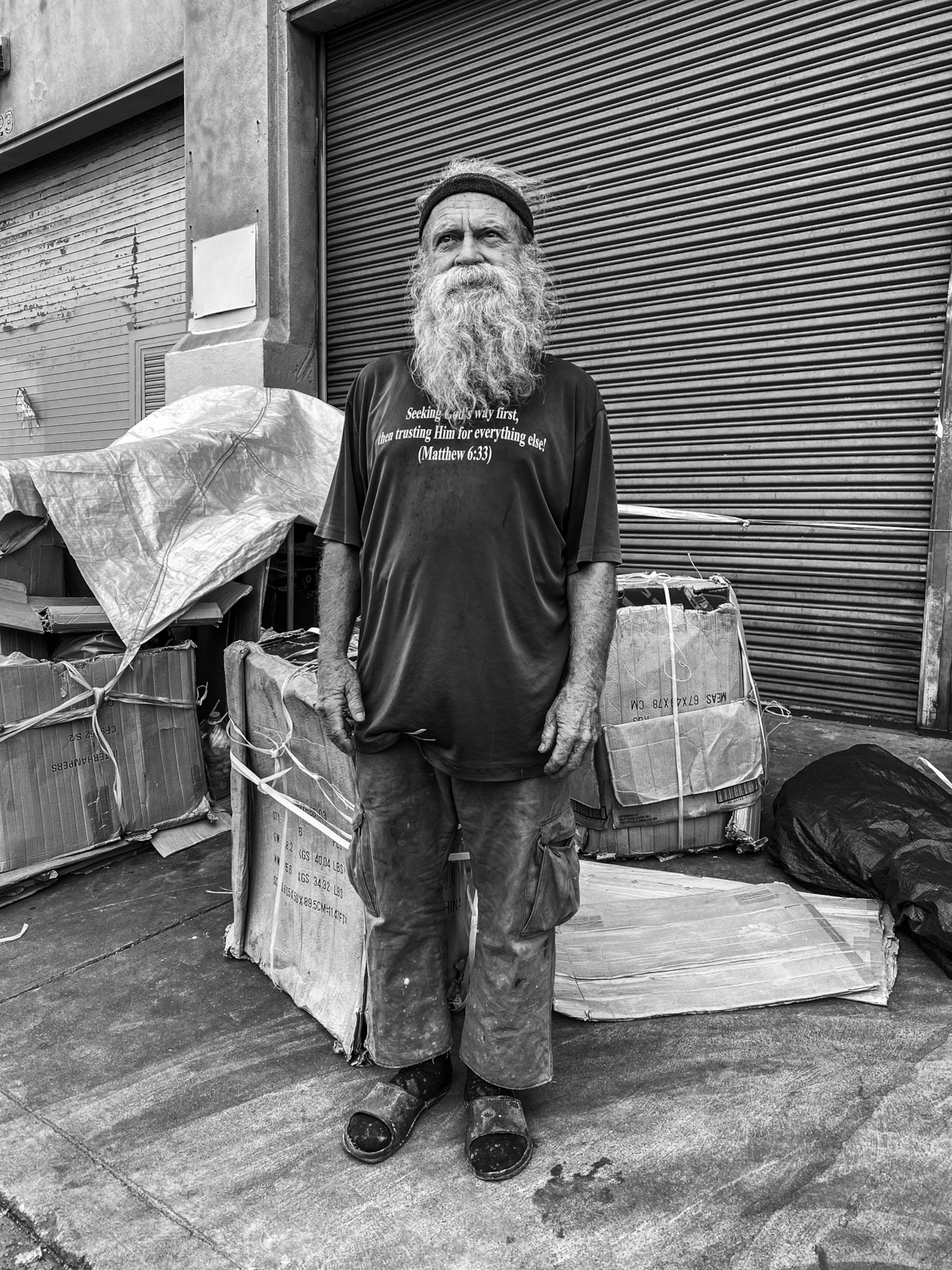
Last Friday, I saw two ambulances transporting four exposed or infected people from Union Rescue Mission. Several blocks away, I recognized Latoya Young, a 38-year-old HIV-positive woman I interviewed recently, inside the back of an ambulance with a breathing tube under her nose. The paramedics didn’t let me approach, but I nodded hello and told her I would see her again soon.
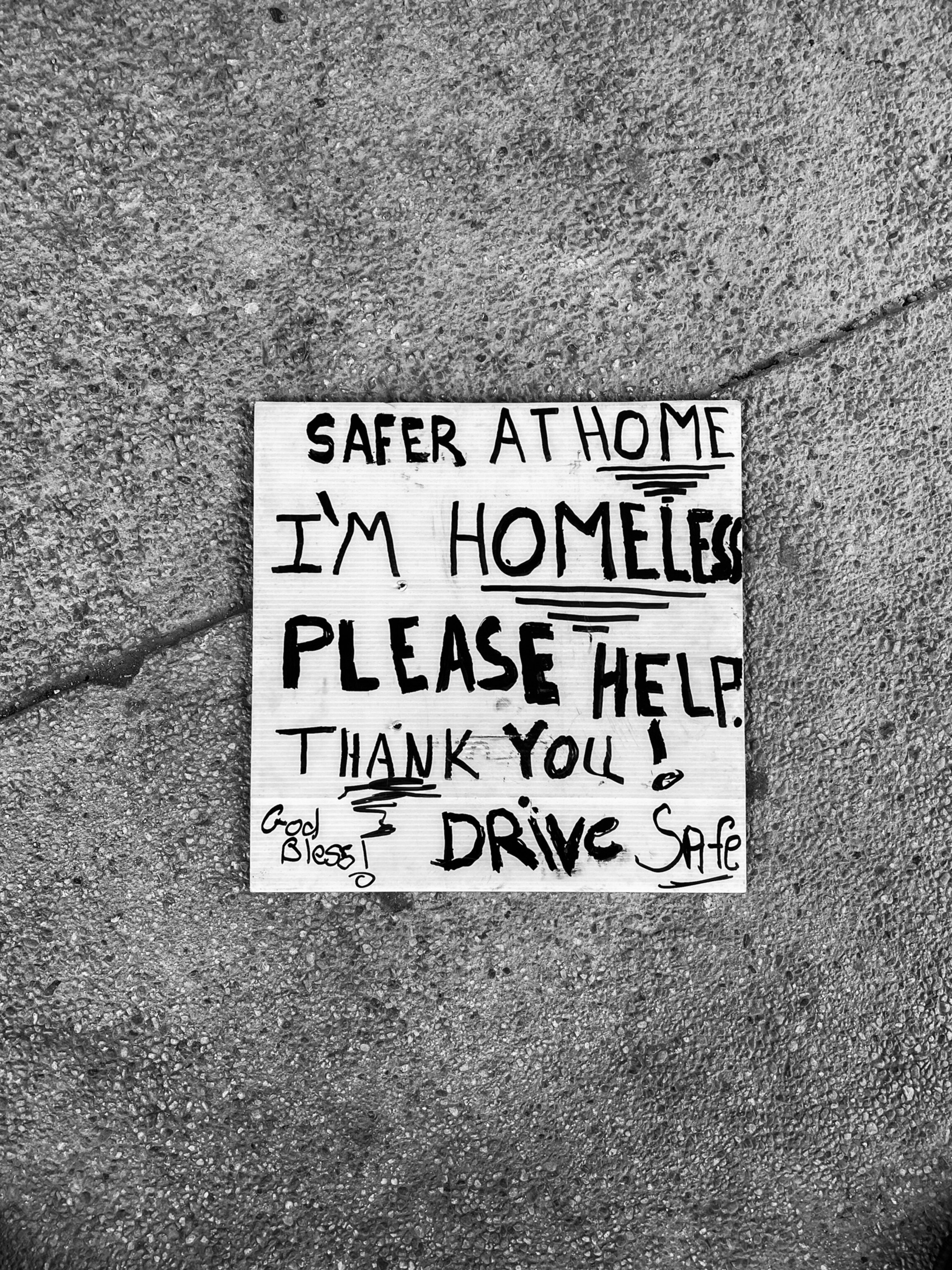
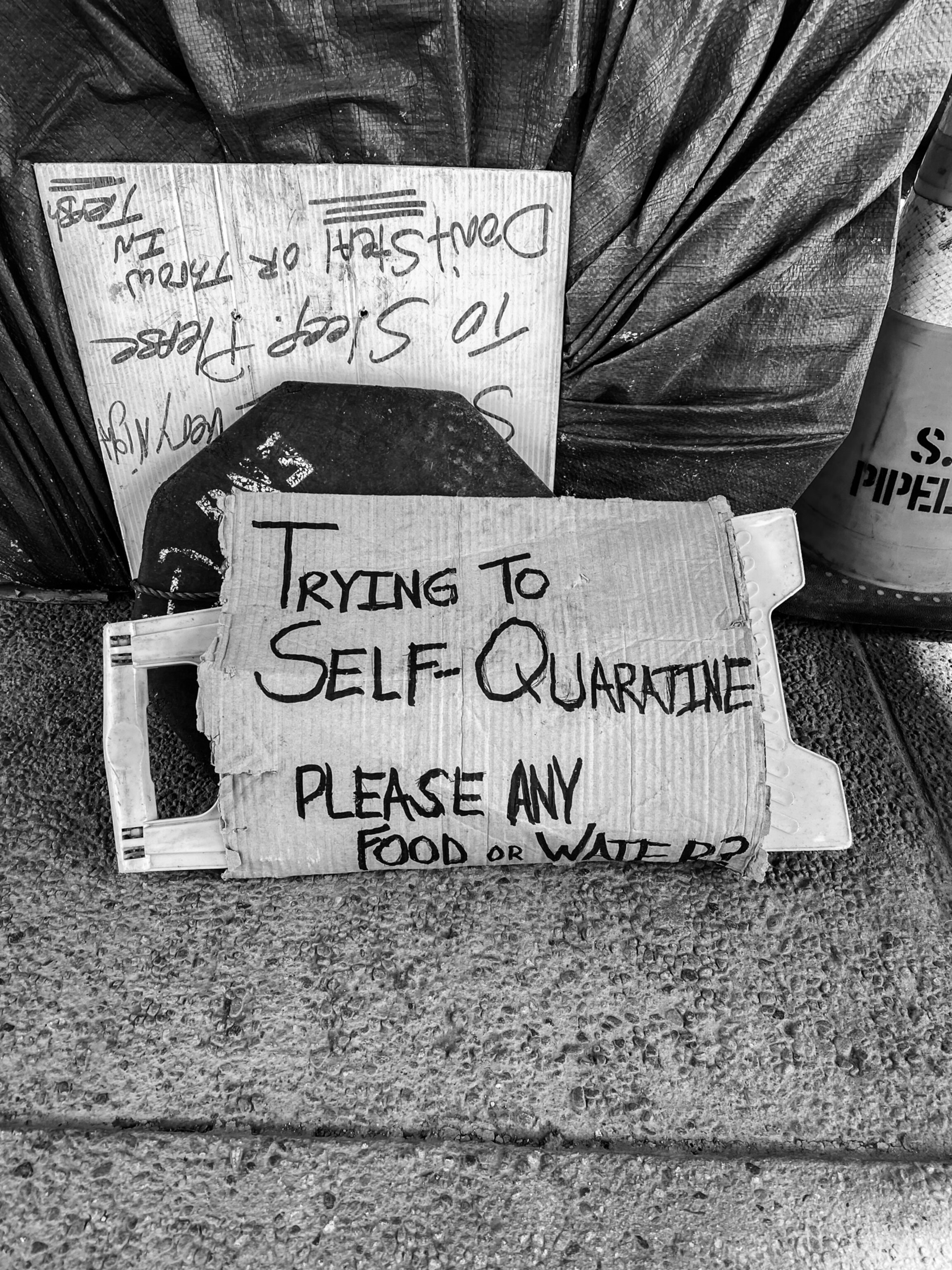
Some people I photographed told me they weren’t worried about the coronavirus because they believe they have strong immune systems. It’s like another flu, others said. Many inhabitants are like Fatima, 37, a Muslim who’s lived on Skid Row for five years and says she’s putting her fate in God’s hands. "Prayer works,” she said. “If you pray, God answers your prayers.”

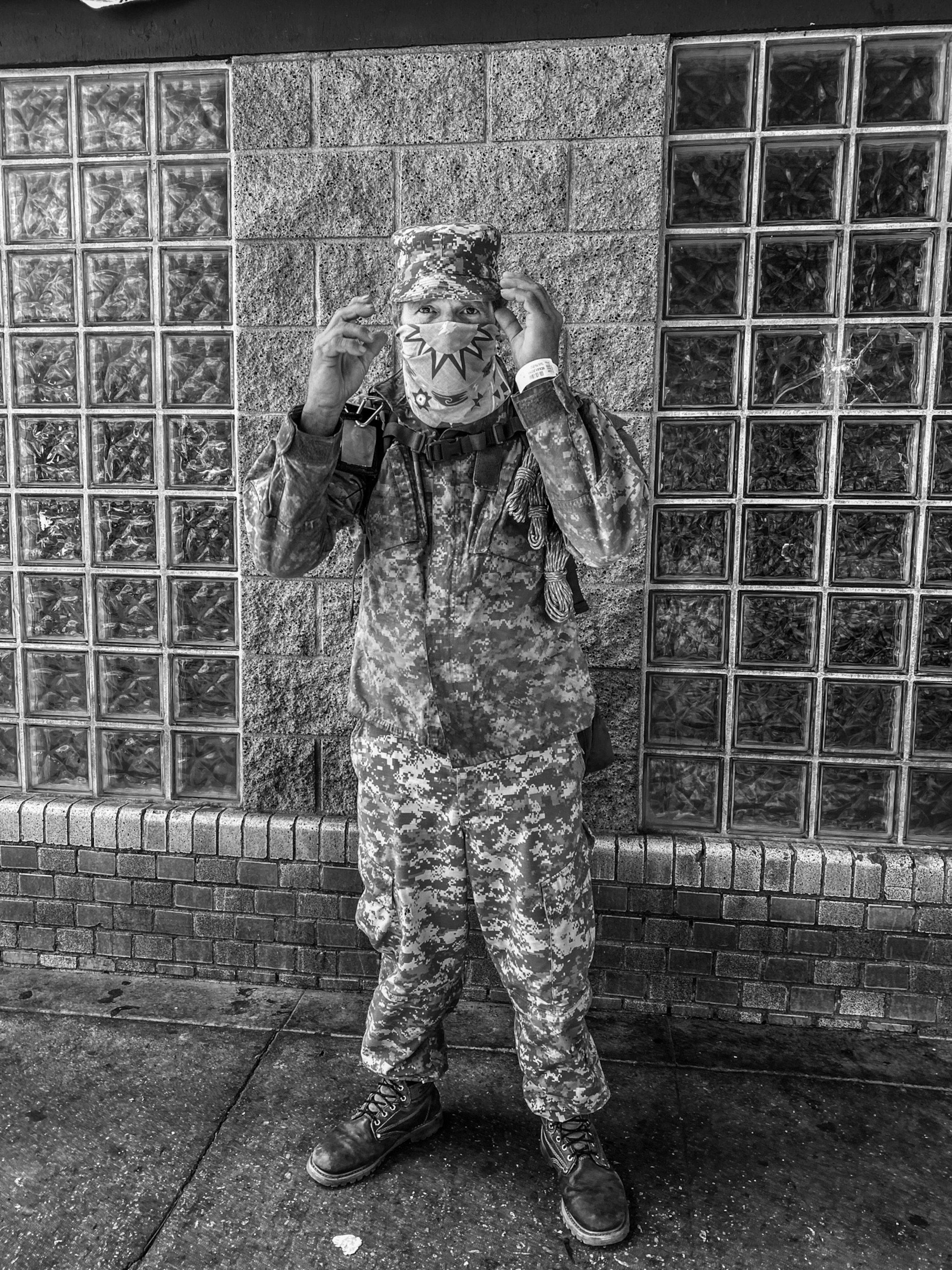
One man I met, Ron, was wearing army fatigues and shifting nervously from foot to foot as he talked. He told me he lives a few blocks away and minimizes the time he spends on Skid Row but has to come in to get food and medication from the missions. He was wearing a decorated bandanna as a mask and said he planned to go to the military surplus shop to look for a ventilator. “I’ve been on the street for five to six years,” he said. “This virus that’s going around, it scares me. You know, a lot of people aren’t taking it serious, but if they end up gettin' it, it’s too late to do anything about it then.”
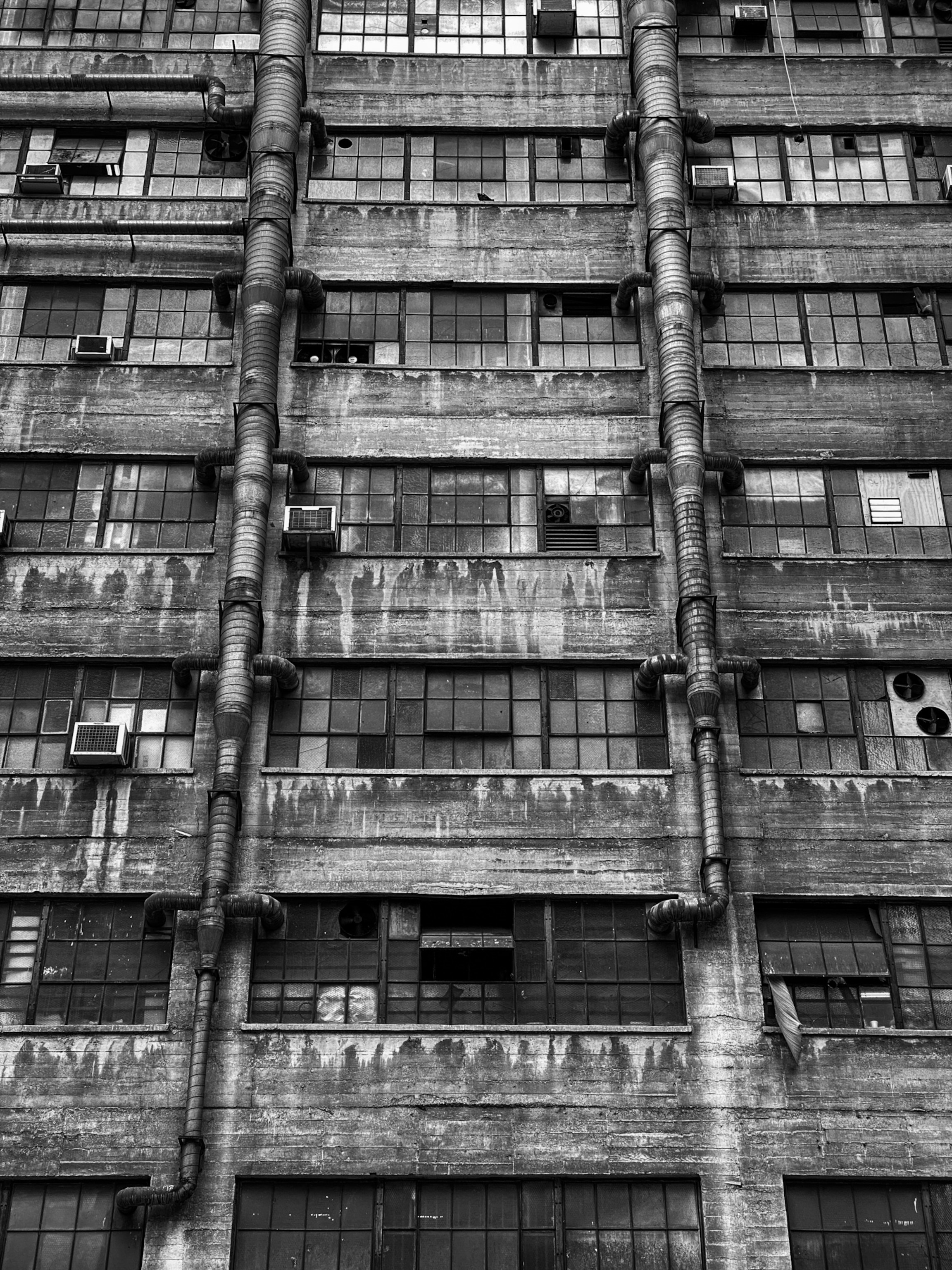

The Los Angeles Homeless Services Authority, which coordinates housing and other services, has opened community centers where people can go for the night to sleep and has provided buses to take them there. There are now a number of portable hand-washing stations and public toilets. Some missions provide showers, and the Skid Row Improvement Coalition, a group of Skid Row residents, was given funding from the Mayor’s office to build their ReFresh spot that offers round-the-clock toilet, shower, and laundry facilities.
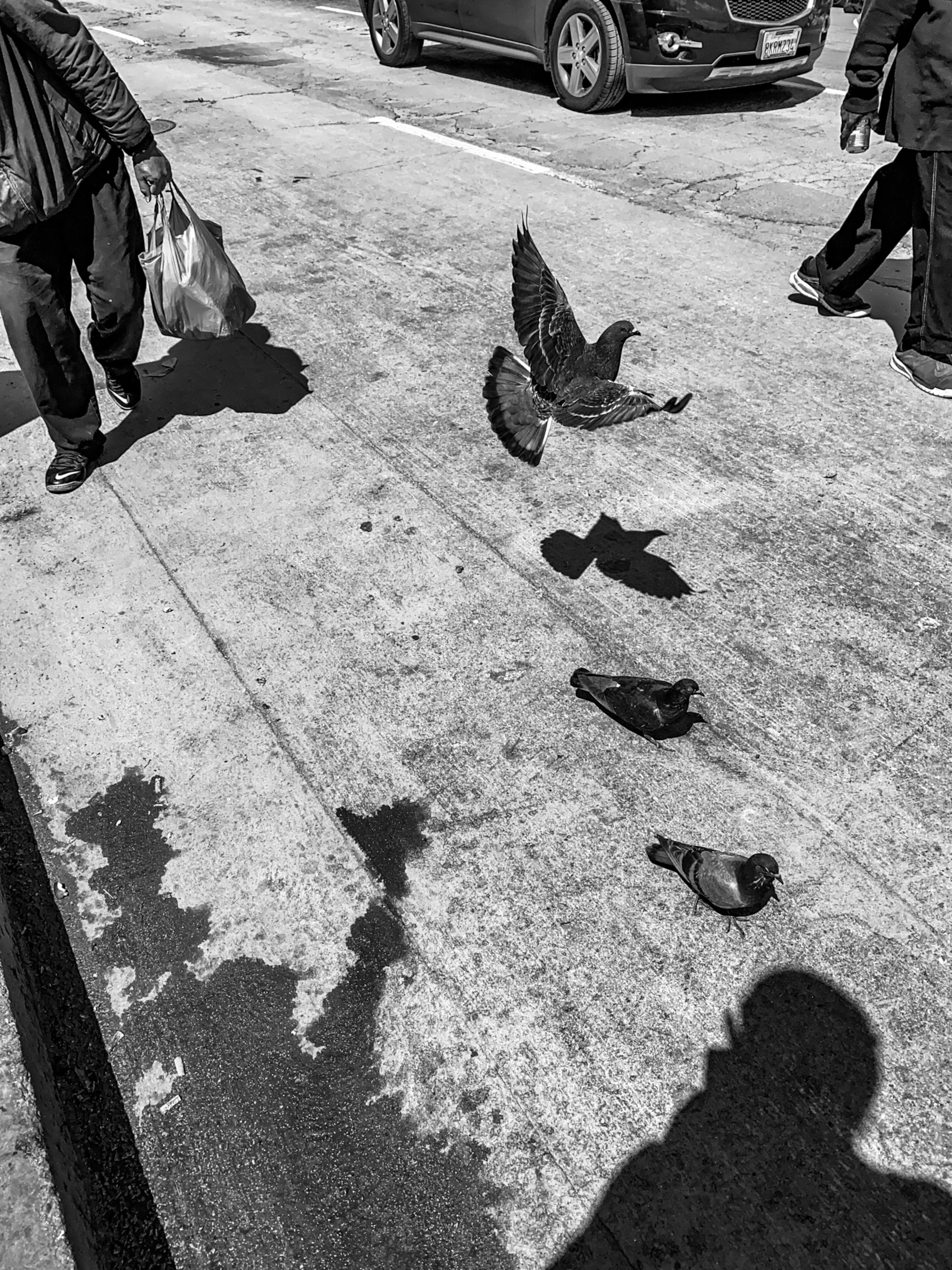
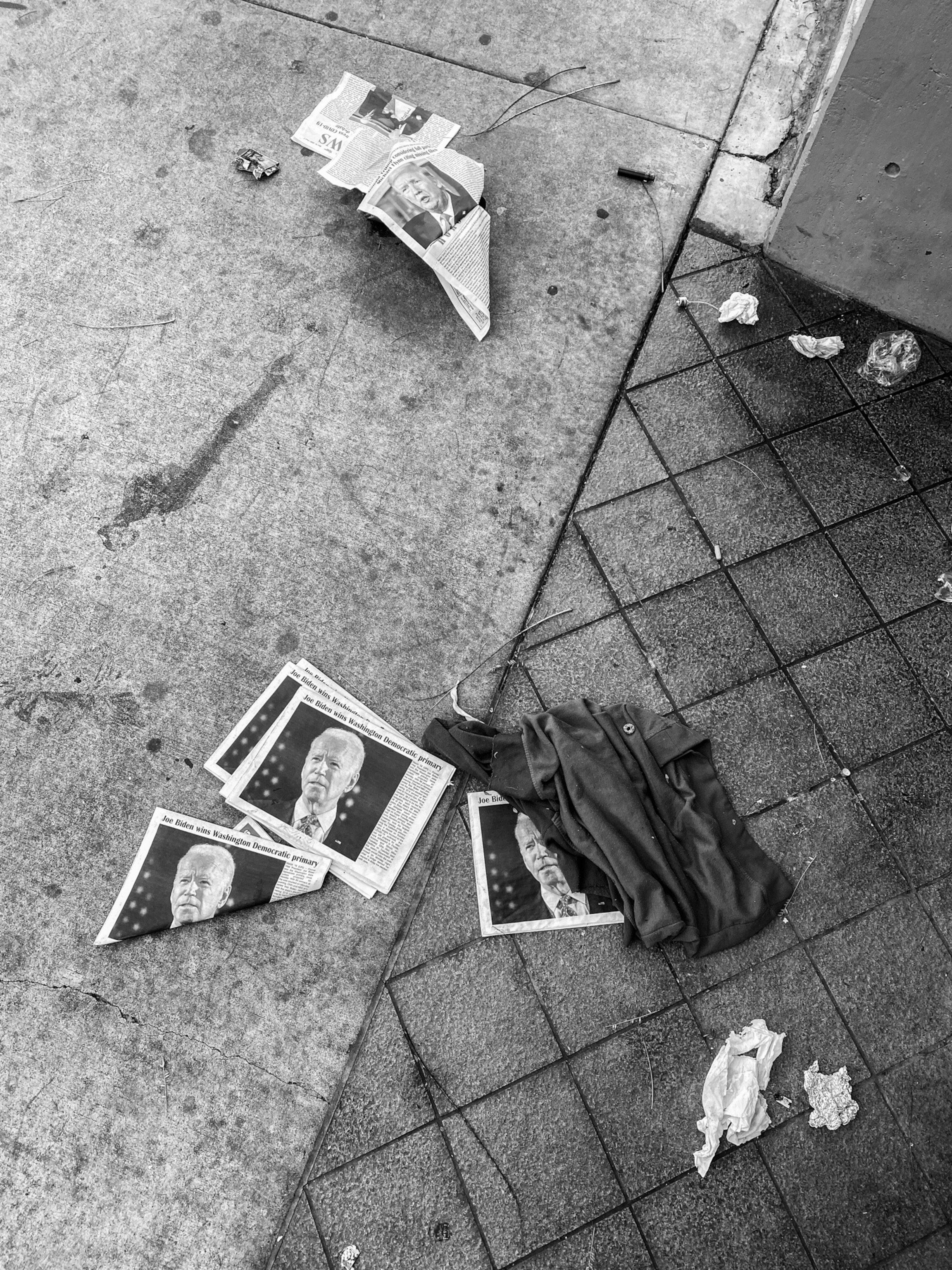
General Dogon, an organizer with the community action network, is something of a legend on Skid Row. When we spoke recently, he declared that the official response isn’t enough. “It’s the city’s responsibility to make sure the streets of L.A. are safe and clean for everybody,” he told me. “They’re doing it in Beverly Hills and the West Side, but not on Skid Row.” In this area, he said, our fight “is not just about the coronavirus. It’s always been the fight for public health and safety.”
(See intimate photos of how families across the world are adapting to a changed world.)
I often feel drawn to photograph people who live on the hard margins of society. I became interested in Skid Row after moving to L.A. a few years ago. Before then, I’d spent most of my time covering conflict-related stories outside the U.S.—in central and northern Africa, Latin America, and the Middle East. Then, with the birth of my daughter, Poppy, I began limiting my time away from home.
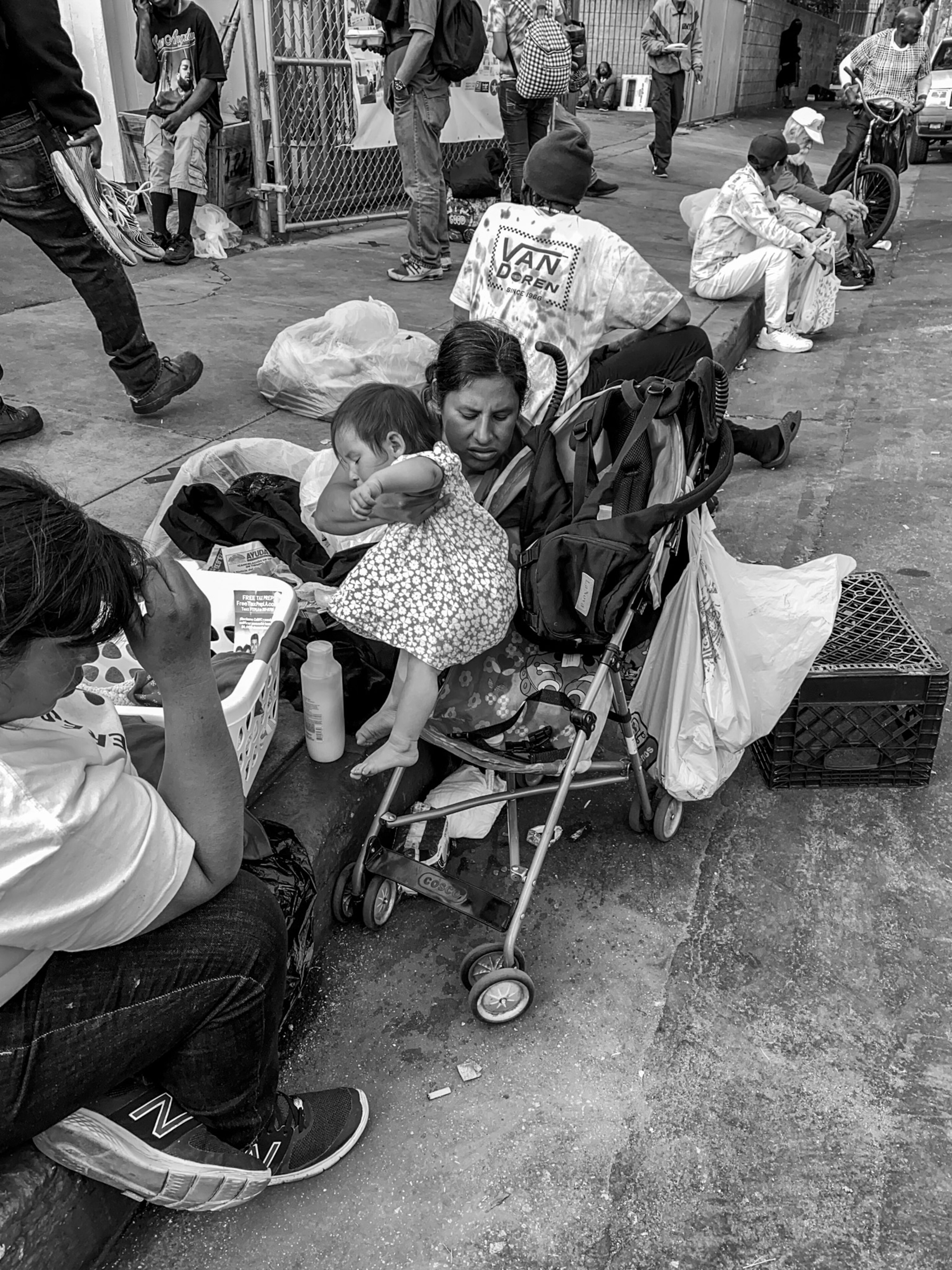
When I first drove through the neighborhood, I was amazed by all the tents and the people crowding the streets. Skid Row had a raw energy that felt more like the Democratic Republic of Congo than America, but it took awhile before I was ready to photograph there. I first needed to tackle my own PTSD from my previous work in order to connect with the people on Skid Row and understand the destructive forces that had led many of them there.
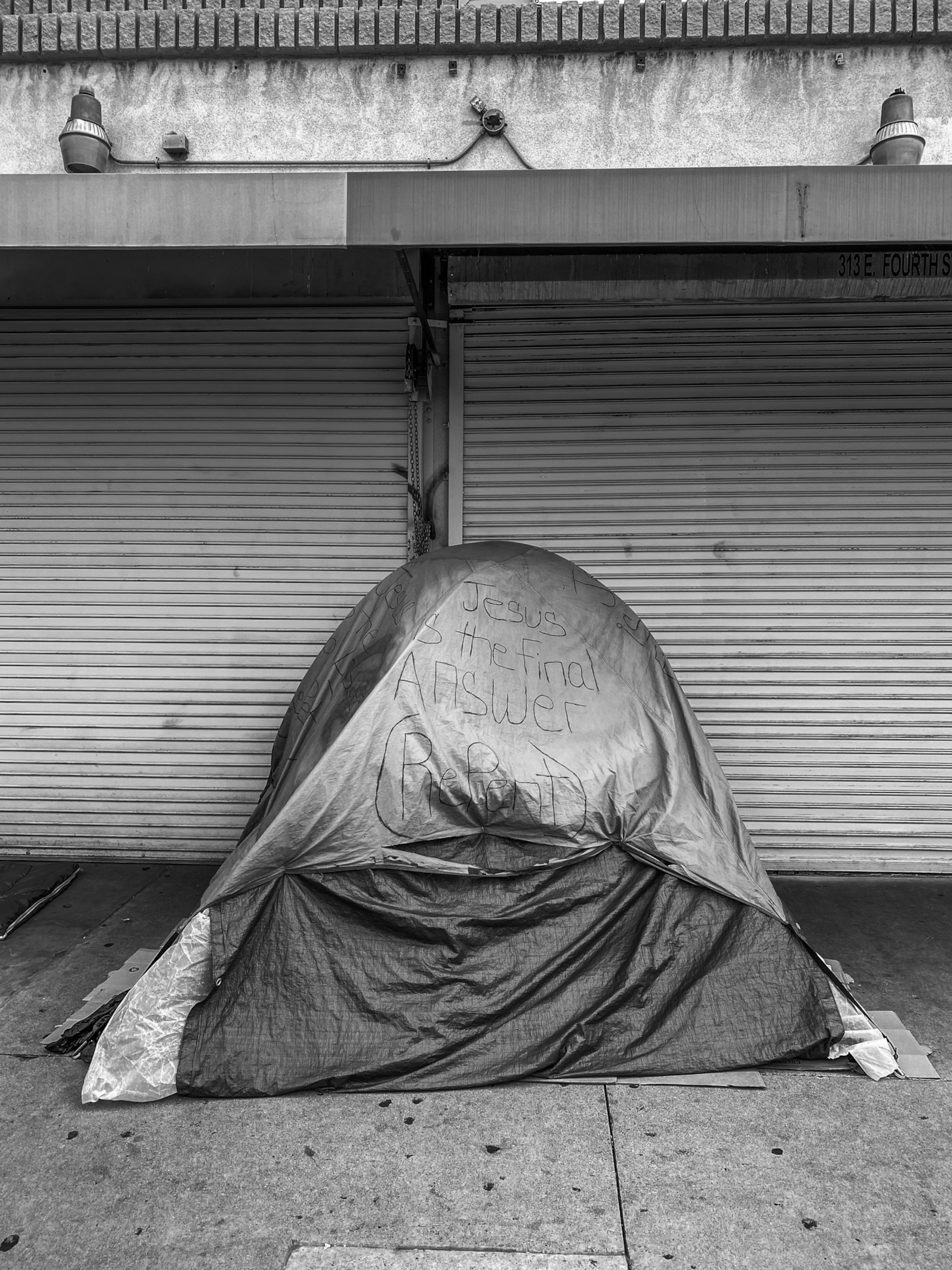

In the beginning, I walked around with well-known community members. Going in several times a week, often for the entire day, and showing my face was important. Some of the streets are pretty rough, but people, particularly the drug dealers, don’t seem worried anymore that I might be a cop or have ulterior motives. While working, I try to hold back and let folks approach me.
I’ve been taking pictures on Skid Row long enough that I see familiar faces every time I return. It’s the first time working in America that I’ve felt such connection to a community—a place where no matter how broken someone may be, people do their best to take care of one another.

